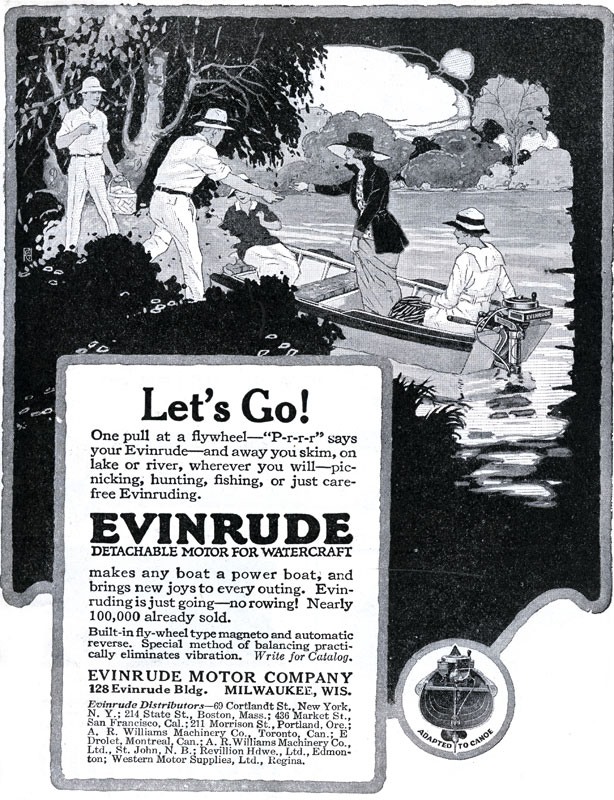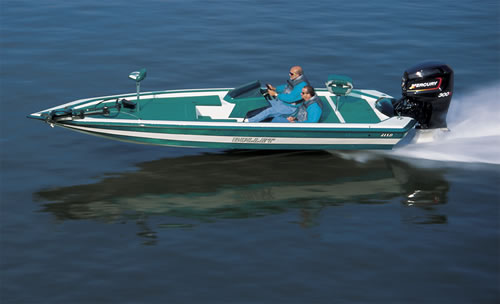Planning Ahead for Winter Fun

August is just around the corner, and before we know it fall will be on the horizon. Most anglers and other boat enthusiasts can squeeze out a few more months on the lake, but what comes next? It’s never too early in the year to prepare for snowmobile season as you’ll want to spend every free moment tearing through the powder when the time comes.
Snowmobile manufacturers try to lure consumers with revamped designs and pleas for brand loyalty, but the primary feature that truly distinguishes snow machines is the engine. As is the case with outboard motors, the choice is fairly straightforward: 2-stroke or 4-stroke. Just when it appeared that 4-cycle motors would dominate the market for environmental reasons, Evinrude created the E-TEC direct-injection system for its outboard motors. Ski-Doo, one of the world’s leading snowmobile manufacturers, was intrigued with these new, cleaner-running 2-stroke engines and modified them for winter.
The 600 H.O. E-TEC 2-cycle produces fewer carbon monoxide emissions than any 4-stroke version on the market. It meets and exceeds all Environmental Protection Agency standards for snowmobiles and runs best on Yamaha 2s oil and other similar specialized products. Its popularity has made 2-stroke engines relevant once again in the cold winter months. Before the snow begins to fall, evaluate the bevy of wintertime options.





 Boat owners who regularly use small crafts might wonder why 2-stroke oil additives matter so much. In truth, the additives found in a fuel-oil mix are just as important as the quality of the oil itself. The chief goal of any outboard motor oil is to lubricate the engine and keep it running smoothly. That would not be possible without additives such as ashless detergents.
Boat owners who regularly use small crafts might wonder why 2-stroke oil additives matter so much. In truth, the additives found in a fuel-oil mix are just as important as the quality of the oil itself. The chief goal of any outboard motor oil is to lubricate the engine and keep it running smoothly. That would not be possible without additives such as ashless detergents. Contrary to popular belief, not all 2-cycle engines are suited for the same purposes. For the most part, 2-cycles can be separated into two distinct groups: water-cooled engines and air-cooled engines. Outboard motors are typically run at high speeds for long durations and then throttled down once a boater reaches his or her destination. Recirculated water keeps these engines cool. On the other hand, most chainsaws are stopped and started frequently, and their engines are air-cooled.
Contrary to popular belief, not all 2-cycle engines are suited for the same purposes. For the most part, 2-cycles can be separated into two distinct groups: water-cooled engines and air-cooled engines. Outboard motors are typically run at high speeds for long durations and then throttled down once a boater reaches his or her destination. Recirculated water keeps these engines cool. On the other hand, most chainsaws are stopped and started frequently, and their engines are air-cooled. Since its inception 102 years ago, Evinrude has been a pioneer in the outboard motor market. Surprisingly, the first outboard motor built by company founder Ole Evinrude in 1907 wasn’t all that different from today’s 2-cycle engines. The components remain the same, but new Evinrude engines feature significantly increased speed and efficiency.
Since its inception 102 years ago, Evinrude has been a pioneer in the outboard motor market. Surprisingly, the first outboard motor built by company founder Ole Evinrude in 1907 wasn’t all that different from today’s 2-cycle engines. The components remain the same, but new Evinrude engines feature significantly increased speed and efficiency.